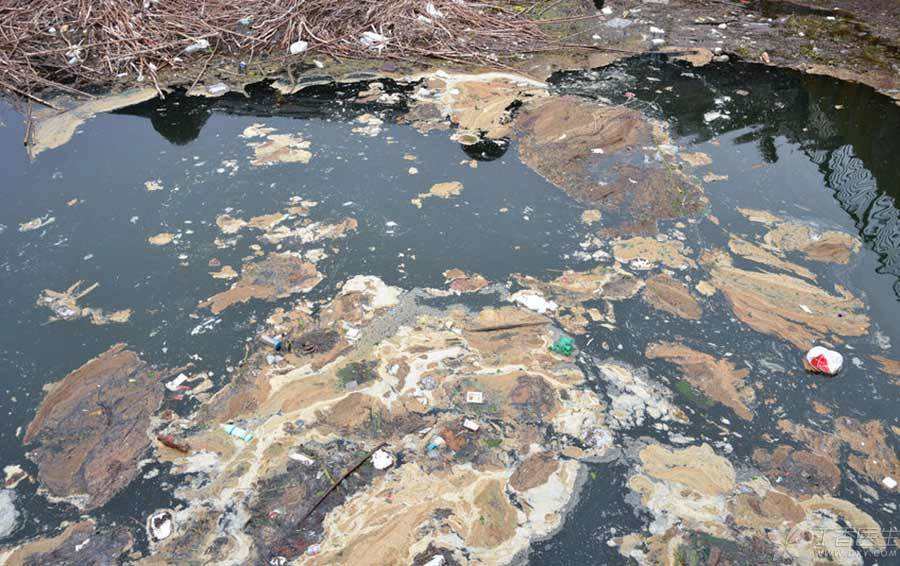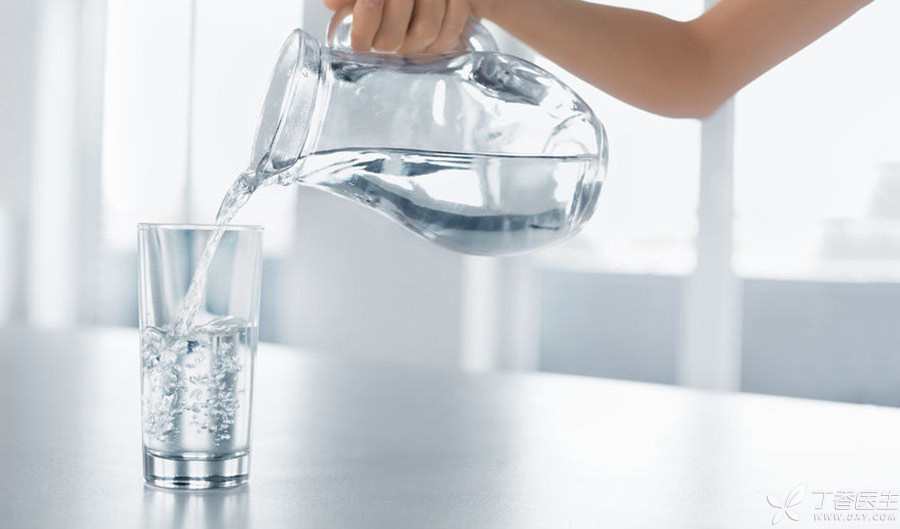
Over the past three years, researchers from Tsinghua University have collected 164 water samples from 155 locations in 23 provinces, 44 cities and towns. The water samples cover factory water, household tap water and source water, which is by far the largest and most comprehensive survey in China.
Researchers detected all 9 kinds of nitrosamine disinfection by-products currently known in tap water samples, of which NDMA (nitroso dimethylamine) is the highest content of nitrosamine compounds.
As a result, some media wrote a report entitled “Suspected Carcinogens Detected in Tap Water of 44 Cities in 23 Provinces”, which caused panic at that time.
The tap water problem involves public health. How can Dr. Clove be missing from the discussion? Let’s follow us to see how to interpret the news.
Is nitrosamine a carcinogen?
Nitrosamine compounds have been determined as Class 2A carcinogens by the International Cancer Research Center, i.e. [animal carcinogenic evidence is clear, but human carcinogenic evidence is insufficient].
Many other epidemiological studies have shown that nitrosamine compounds have obvious correlation with digestive system cancer.
It sounds a bit scary, then why are there nitrosamines in tap water?
Nitrosamines are by-products of tap water disinfection
Chlorine-containing disinfectants are usually used for disinfection in waterworks. Under the action of chlorine, a small amount of pollutants in water will become disinfection by-products, and some organic nitrides can become nitrosamines.
Chlorine is the cheapest and relatively safe disinfection method, and its substitute has not been found for many years. Therefore, trace disinfection by-products such as nitrosamines are inevitable, and all countries in the world are without exception.
At present, most scholars hold the view that tap water disinfection by-products, including nitrosamines, will not have obvious impact on health, but if they are not disinfected, the harm may be even greater.
The WHO Guidelines for Drinking Water hold the same view.
Is nitrosamine dangerous in water?
Readers who often see Dr. Clove should all say [regardless of dose, toxicity is hooligan]. Since nitrosamines are inevitably contained in tap water at present, let’s pay attention to the dose.
The survey data from Tsinghua University show that:
- The average concentration of NDMA in tap water in China is about 11 ng/L in East and South China, and the average concentration of NDMA in household tap water in Yangtze River Delta is about 18 ng/L, and the average concentration of NDMA in household tap water in Yangtze River Delta is about 28 ng/L
This is also why the news said that East China and South China are [the most serious].
So what does these data mean for what? Does it mean that these tap water cannot be drunk?
Although nitrosamine in tap water is a research hotspot, only a few countries and regions have formulated standards for it.
For example, California has set a particularly stringent standard (10 ng/L). If measured by this standard, about 1/4 of China’s tap water exceeds the standard.
But look at other criteria:
- Health Canada’s guideline is 40 ng/L, Australia’s guideline is 100 ng/L, and WHO’s guideline is 100 ng/L
If measured by these standards, only a few samples in this survey in Tsinghua University exceed Australian or WHO standards, while only about 7% exceed Canadian standards.
In other words, if according to WHO standards, the vast majority of water in this test is safe.
Safety does not mean that improvement is not needed.
In the samples detected this time, the average concentration (median) in China is about 22 ng/L, while that in the United States is 4 ng/L. In addition, the situation in China is more serious than that in the United States in terms of the type and detection rate of nitrosamines. If compared with Europe and Japan, our gap is even greater.
Moreover, researchers in Tsinghua detected the highest concentration of NDMA in the leading water of a county town in the Yangtze River Delta, which was the only 44 cities that exceeded the World Health Organization’s 100ng/L standard.
In the final analysis, this is the problem of source pollution.
Why do you say that?
Although some of the nitrosamines in tap water are indeed by-products of disinfection, However, as long as the standard is strictly followed, this is controllable. However, this study found that if the waterworks use rivers as water sources, the NDMA concentration is significantly higher than that taken from reservoirs or lakes. This is because the water systems of lakes and reservoirs are relatively closed and are not easily affected by upstream pollutants.
The Yangtze River Delta region is located at the end of the main stream of the Yangtze River. Pollutants in the upper reaches accumulate and converge here. In addition, the local economy is developed, the population is dense, and the pollution emission is large, which eventually leads to the excessive amount of nitrosamines in tap water in this region.

Everyone knows that pollution at the source should be controlled.
However, this is the same dilemma as the management of PM 2.5: the accumulated disadvantages of environmental pollution are deep, and the industrial transformation is under pressure. For this overall problem, managers have to calculate the economic accounts repeatedly.
Of course, nitrosamines, a suspected carcinogen, should be reduced as much as possible, but if [high standards] are blindly pursued, the interests of all taxpayers will be harmed in the end.
Water is not the only source of nitrosamines
Although water should be drunk every day, the concentration of nitrosamines is relatively low.
According to the data reported by the media, even if you drink water from the Yangtze River Delta all your life, the probability of digestive tract cancer due to nitrosamine is only a few in 100,000.
Relatively speaking, nitrosamines from other sources deserve more attention.
Step 1 Pickled food
Preserved products contain more nitrosamines.
The survey in Hetao area of Ba Meng, Inner Mongolia shows that the intake of nitrosamines and nitrite in local drinking water and food is positively correlated with the death rate of digestive system cancer.
Among them, the nitrosamine content in local pickled meat and pickled cabbage can reach 80,000 ng/kg, which is thousands of times the average nitrosamine concentration in water.
In another study, a variety of nitrosamines were detected in ham, with an average content of 8500 ng/kg.
The International Cancer Research Center has classified Chinese salted fish as a category 1 carcinogen. Research data show that nitrosamines in salted fish and its products are generally above 3000 ng/kg.
This, of course, does not mean that pickled products cannot be eaten, but should be moderate.
2. Tobacco
Tobacco is also one of the important sources of nitrosamines, and the nitrosamine content of a flue-cured tobacco can reach more than 200 ng.
The nitrosamine content of a mixed cigarette can exceed 3000 ng, which is equivalent to drinking water for three months in the Yangtze River Delta region.
If factors such as first-hand smoke and second-hand smoke are taken into account, the exposure of nitrosamines caused by tobacco is also amazing, definitely far exceeding that from drinking water.
From this point of view, if you are a person who smokes every day and especially likes to eat pickled food, you are afraid of water at this time, which seems to be a bit too flattering.

It is good to pay attention to health, but a broader vision is needed.
Health and nutrition status, lifestyle, medical level, etc. all have an impact. Don’t be frightened by one report.
In this survey, the Yangtze River Delta region with the highest nitrosamine content in tap water is also the most economically developed region in China and the region with the highest life expectancy in China.
You may question, this is also the region with the highest incidence of cancer.
But do you know that the regions with the highest incidence of cancer in the world are concentrated in Australia, New Zealand, North America and Western Europe, while Africa has the lowest incidence of cancer.
Why? Because they are not old enough to have cancer.
If you are really afraid of cancer, it is better to eat less cured meat products and smoke less cigarettes. A healthy lifestyle is always the most important thing.
As for the water purifier, I would also like to say two words incidentally.
I believe this news may make others ecstatic, such as those selling water purifiers. Yes, panic is the best promotion.
A big wave of promotional copywriting related to nitrosamines is in full swing. Before they make up the advertisement, let me make a face in advance.
WHO’s Drinking Water Guidelines specifically state:
The best way to eliminate NDMA in water should be ultraviolet irradiation, provided that the water source is not heavily polluted by NDMA.
NDMA cannot be removed by aeration, activated carbon adsorption, reverse osmosis or biodegradation. At present, the principles of most water purification products on the market are nothing more than adsorption, ion exchange (which has nothing to do with nitrosamines) and reverse osmosis.
Summary
1. Disinfection by-products such as nitrosamines are common in tap water and are not unique to China.
2. Chlorine disinfection is cheap and relatively safe and cannot be replaced for the time being.
3. Most of the data measured in this survey conform to Australian and Canadian standards, and the vast majority conform to international standards.
4. The water pollution situation in China is not optimistic, but nitrosamines mainly come from food, smoking and other ways.
5. The nitrosamine limit for water should not be blindly compared. Many factors should be comprehensively considered and as low as possible on the premise of rationality and feasibility.
6. Adsorption, ion exchange and reverse osmosis cannot effectively remove nitrosamines, and water purification equipment is of little use.
Finally, I would like to say two more words:
There is no big problem with Tsinghua’s research itself. It is still valuable as an academic exploration.
However, the media should not over-interpret it. They always want to put a big satellite.
